12 Things to Do In Yellowstone – Where Heaven and Hell Collide

At first glance, it looks like a steaming wasteland: gurgling, sputtering, and fuming from its vents, as if to warn us of a doomsday millennia in the making.

This has to be what hell looks like, you think for a moment, until you look past the vents, to the verdant hillsides, and the multitude of wildlife that actually flock to this very smoldering basin seeking comfort in its thermal soil during harsh winters.

So vast and versatile is the landscape at Yellowstone National Park that as I sit down to write this post, I struggle to stay focused. Because the minute I start taking notes of the places we visited in Yellowstone, the images fly through my head and my mind wanders…
- To that July 4th stroll I took with my husband along the Upper Geyser Basin, and how I thought as I gazed into the rainbow depths of the Morning Glory Pool “this can’t be real”;
- To the pre-dawn hours during which I roused everyone out of bed in childish anticipation of spotting a grizzly in the woods;
- To the evenings spent laughing and sharing stories over a sumptuous meal at the elegant and historic Old Faithful Inn;
- To the hundreds upon hundreds of bison we saw grazing just as the sun peeked over the hillsides of Lamar Valley ; and
- To our last day in the park, which I spent marveling at the sheer power that is the Yellowstone River and appreciating, fully, how the Grand Canyon of Yellowstone was carved by such a formidable force.
We visited Yellowstone from July 4-8, peak season for any of America’s national parks, and we managed to go through most of it, except to the northwest part near Mammoth Hot Springs. We had started a weeklong trip first in Grand Teton (a must-see in its own right, see why we love it here) and proceeded on to Yellowstone. The small excerpts you read in grade-school textbooks and the photos of colorful pools you see online don’t do justice to this magical wilderness that one simply must experience in person.
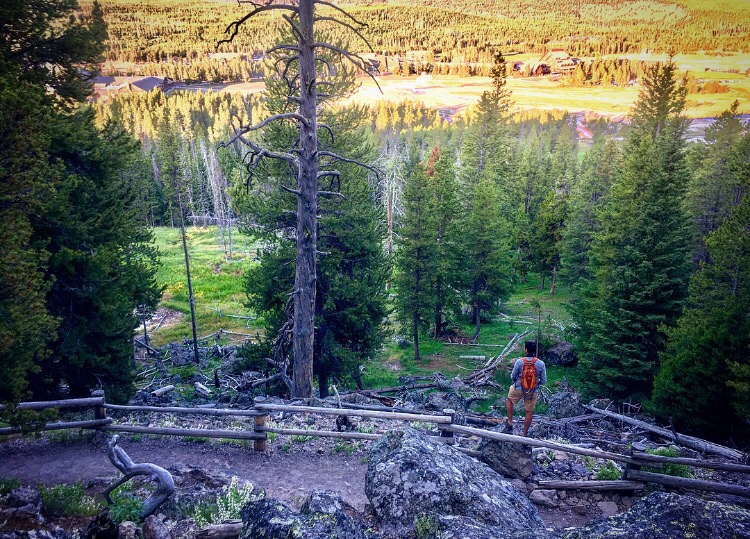
Here are some of the key places to check out in the park. And trust me, Old Faithful is just the tip of this supervolcano.
Things To Do & See
1 Lewis Lake

We drove into the park from Grand Teton via the South Entrance, after having crossed the Continental Divide. We knew the park would probably be a bit crowded given the July 4th holiday, so instead of rushing to Old Faithful where the throngs would undoubtedly be assembled, we took our time. We stopped at Lewis Lake, so named for Meriwether Lewis of the Lewis and Clark Expedition.

It was peaceful staring across the water and enjoying the cooler air so uncharacteristic in my home states of Florida and Georgia in the height of summer. That’s one thing I loved about Yellowstone: Even with it being peak summer season, it never felt too warm, except for near the geyser basin, where the earth and steam vents radiated heat. Here at Lewis Lake, we spent a few serene moments, sinking into the calming sound of water lapping softly against driftwood on the shore.
2 Old Faithful & Upper Geyser Basin
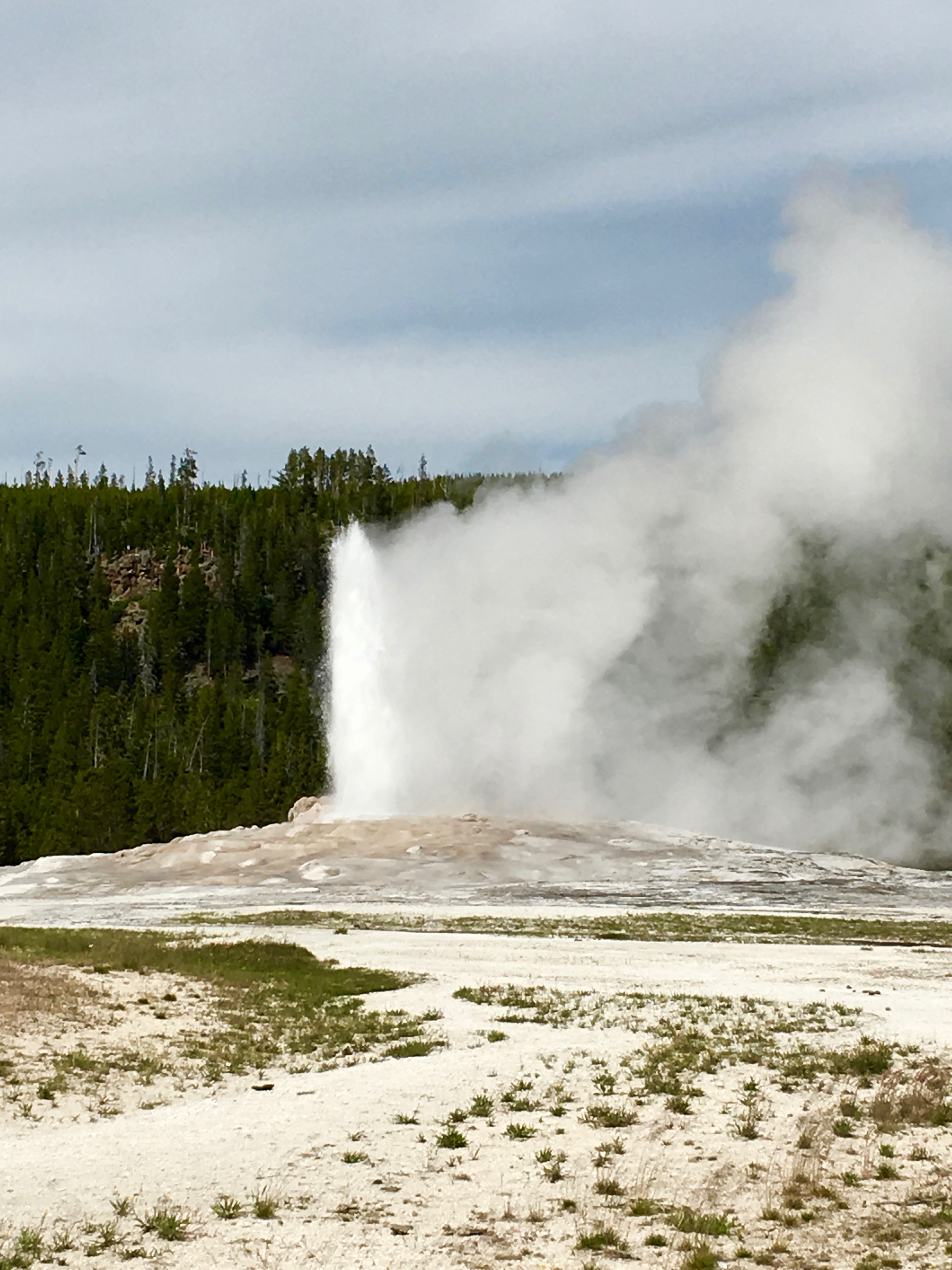
From Lewis Lake we headed straight to the Old Faithful area, which is where there is a visitor center, dining halls and lodging. At around 4:30 p.m., we were four among a group of hundreds encircling Old Faithful, one the largest and most reliable geysers in the park, though not THE largest.
She seemed to have stage fright, spitting hesitantly out of the earth in small, short bursts at first, until finally, she was ready to put on a show, shooting more than 100 feet into the air steadily for a couple minutes.
While Old Faithful may be the most well known because of her reliability and history, the Upper Geyser Basin has about 150 geysers total, so there were still a handful of other geysers that I found to be more impressive, including Grand Geyser and Riverside Geyser, which spewed a gush of mist about 80 feet into the air and into the Firehole River for several minutes on end. We sat across the river watching the spectacle one morning, a mesmerizing show of varying degrees.
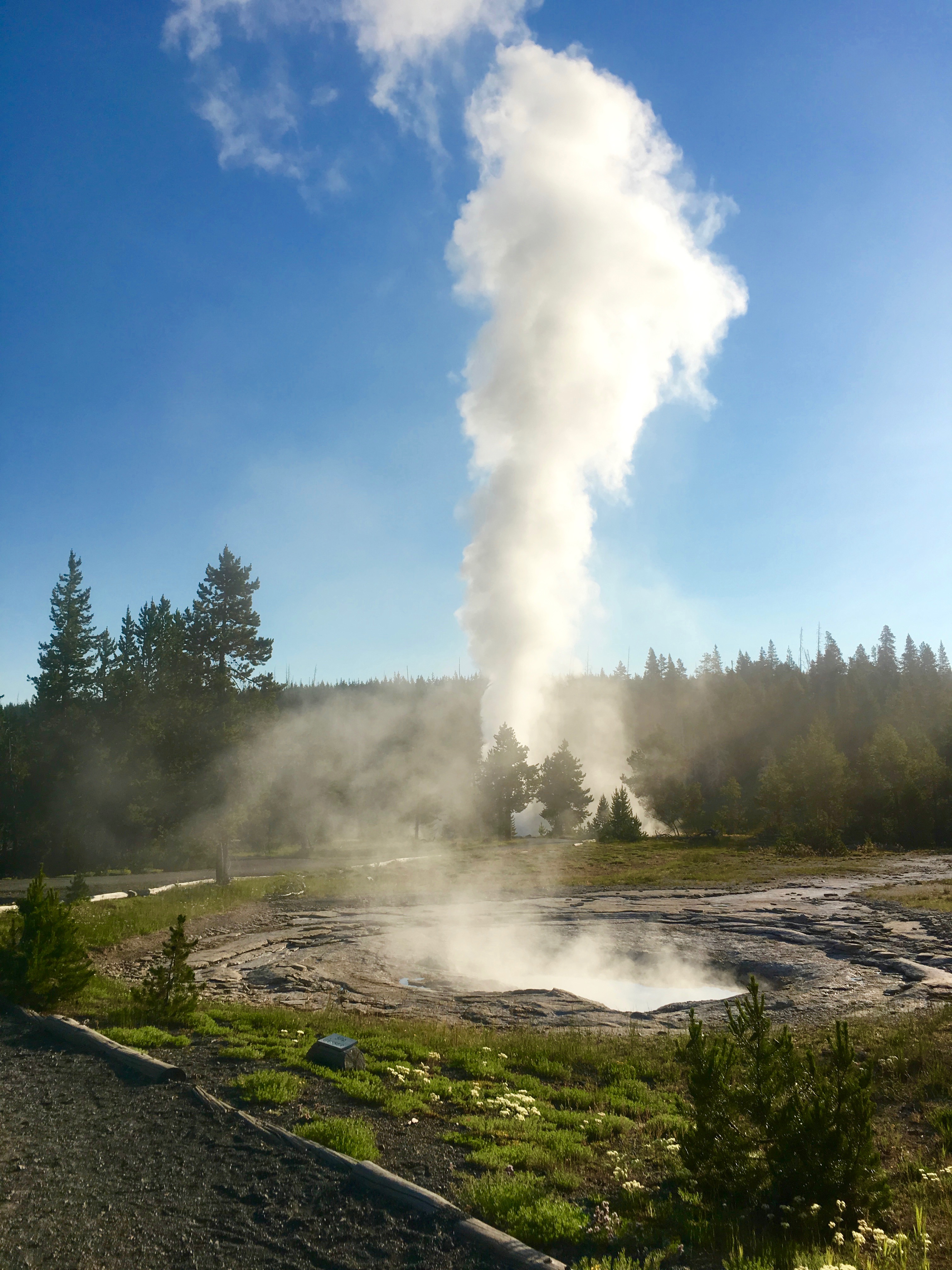
And still there are the hot pools. The bubbling pools beckon like the jets of a jacuzzi, but these are waters you don’t want to get near! Ranging in temperatures above 150°F, there is no chance of survival here if you fall in. Bodies have literally dissolved in Yellowstone’s hot pools when people have accidentally fallen in.

My favorite thermal feature in this geyser basin was the Morning Glory Pool at the end of the wooden walkway. This resplendent spectrum of colors is beautiful to behold to humans, but the range of hues seen is an indication that the pool has been tampered with.
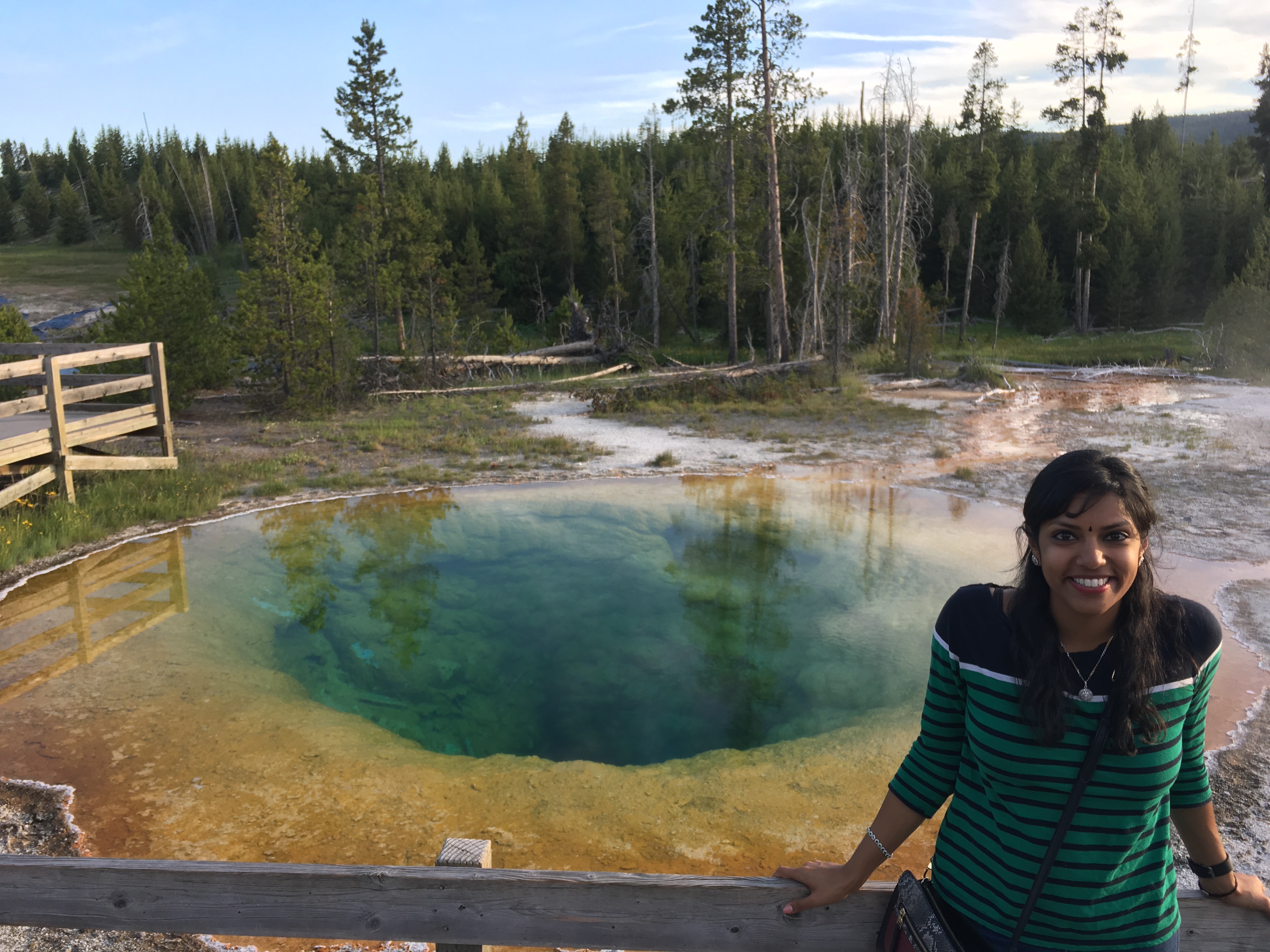
The colors in Yellowstone’s hot springs and pools are caused by organisms such as bacteria, that thrive at various temperatures and in different mineral consistencies. The blue is created by Cyanobacteria, and the bluer the pools, the hotter the water. But we learned that due to interference by humans, who have thrown things into the pools and thus clogged their water sources at the bottom, the pools have very slowly cooled over time, creating the range of colors we now see, caused by a variety of different kinds of microorganisms that thrive at different temperatures.
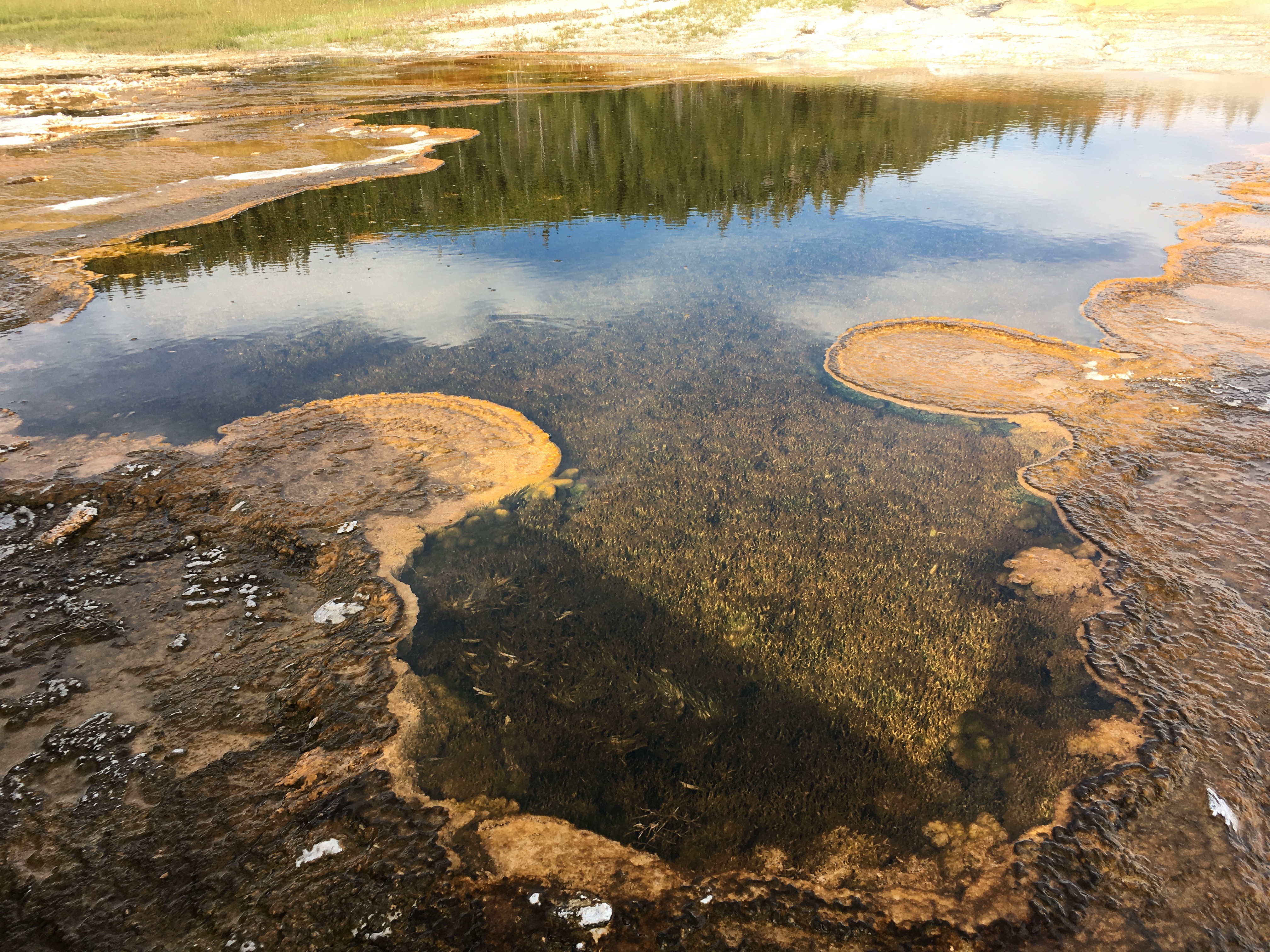
As twilight slowly began to swallow the sun and the mosquitoes emerged, Jis and I scurried to the Old Faithful Inn for dinner.

3 Grand Prismatic Spring

The next day, after walking the Upper Geyser Basin trail again, this time with our eyes peeled for bears, we headed to the Midway Geyser Basin where the famous Grand Prismatic Spring is located, along with two other pools and the large Excelsior Geyser.

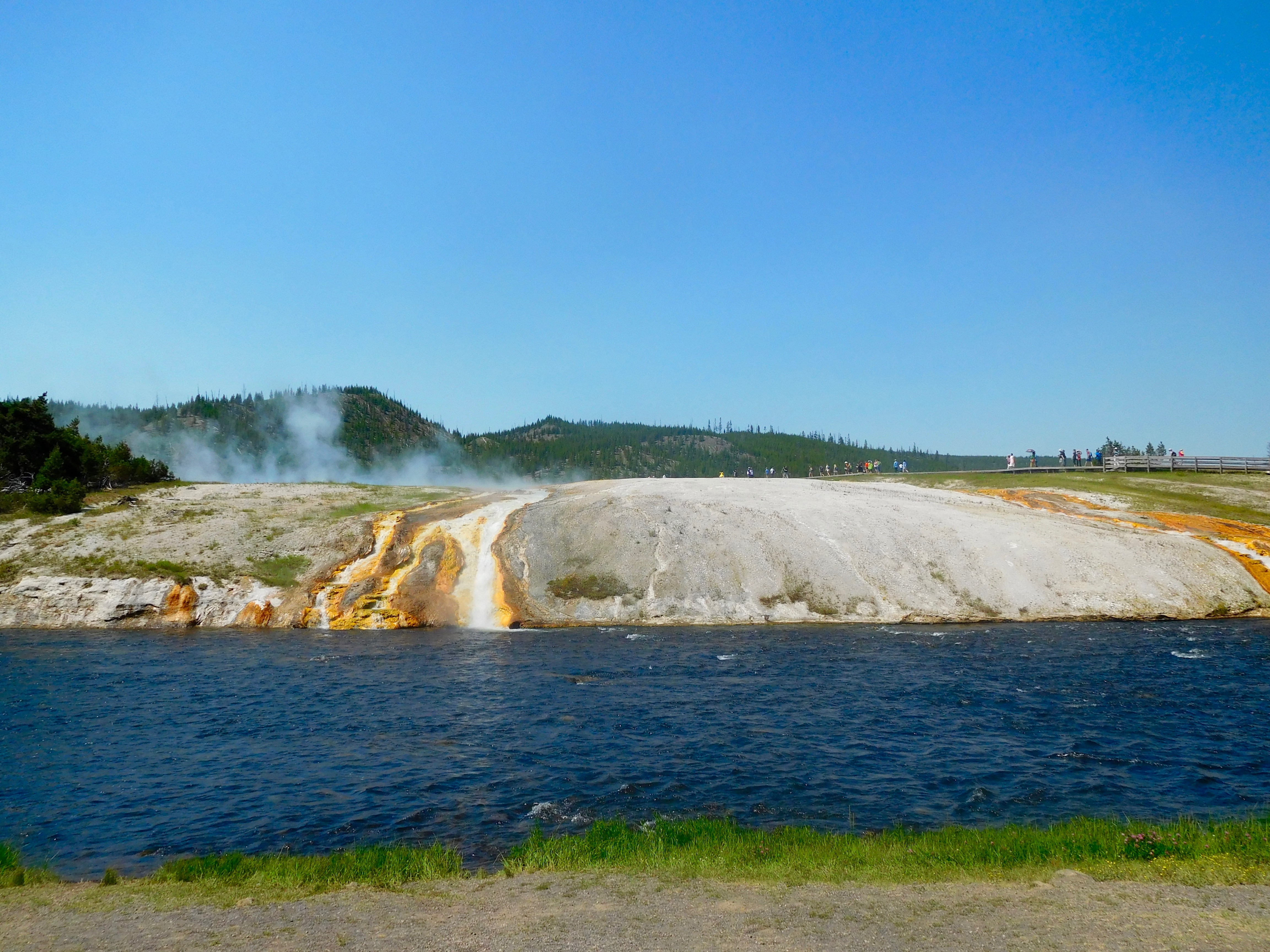
The Grand Prismatic Spring may be one of the most photographed features at Yellowstone, and it’s easy to see why. Its colors are like the Morning Glory Pool… except its size is MUCH greater. At 370 feet in diameter, this pool is larger than a football field, according to the National Park Service.
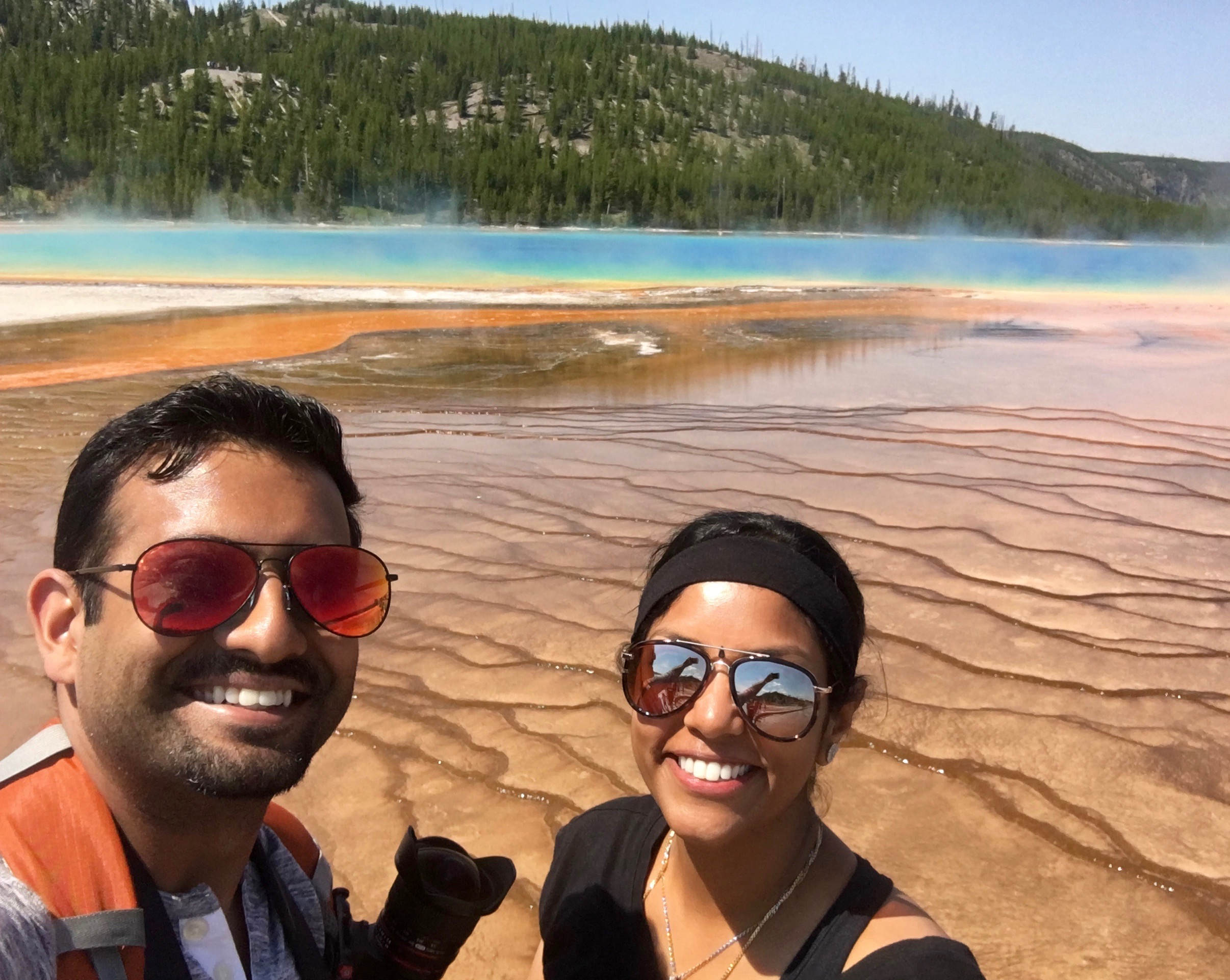
When we were there, we were not able to get an aerial view because the trail leading people up the nearby hillside was closed off due to safety concerns. Sadly, here too, you can see evidence of vandalism, as the microbial mats on the edges of the pool have been scratched up by visitors who have crudely etched words and names into the edges of the pool. It is to protect the pools that the park service has also prohibited the use of drones over these areas — too many foreign objects have fallen or been thrown into the pools, clogging up the natural plumbing system for this thermal terrain.
4 Yellowstone Lake
A large stretch of the road that runs through the east side of the park runs alongside the edges of the lake, where we saw many elk, especially around the Fishing Bridge area. This lake is the largest body of water in the park, according to the National Park Service. It also plays home to the largest population of cutthroat trout in North America, which is strange since this particular fish species is found in the Pacific Ocean. Yellowstone Lake drains into the Atlantic, as it is situated to the right of the Continental Divide. The puzzling presence of these fish at Yellowstone Lake therefore hints at the fact that the lake may have, at one time, drained into the Pacific.
With the use of a underwater robots, researchers have found that the lake bed resembles the terrain of Yellowstone’s geyser basins, with canyons, rock spires and fumaroles lining its floors.
5 & 6 Hayden & Lamar Valleys
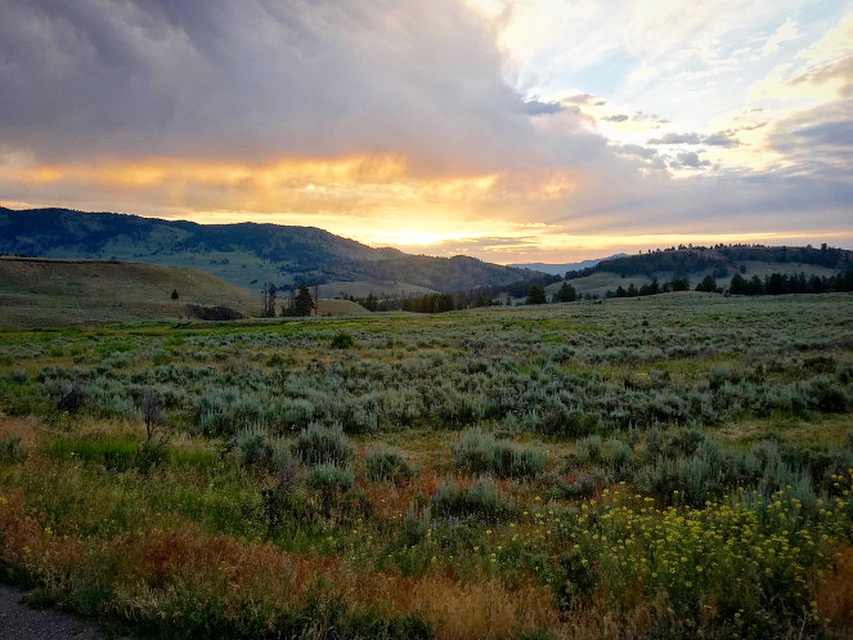
Driving past the lake towards Canyon Village, you come across Hayden Valley, and if you drive even further northeast past the village, you’ll get to Lamar Valley. These are my favorite places in the park, and from my previous post, you can understand why.
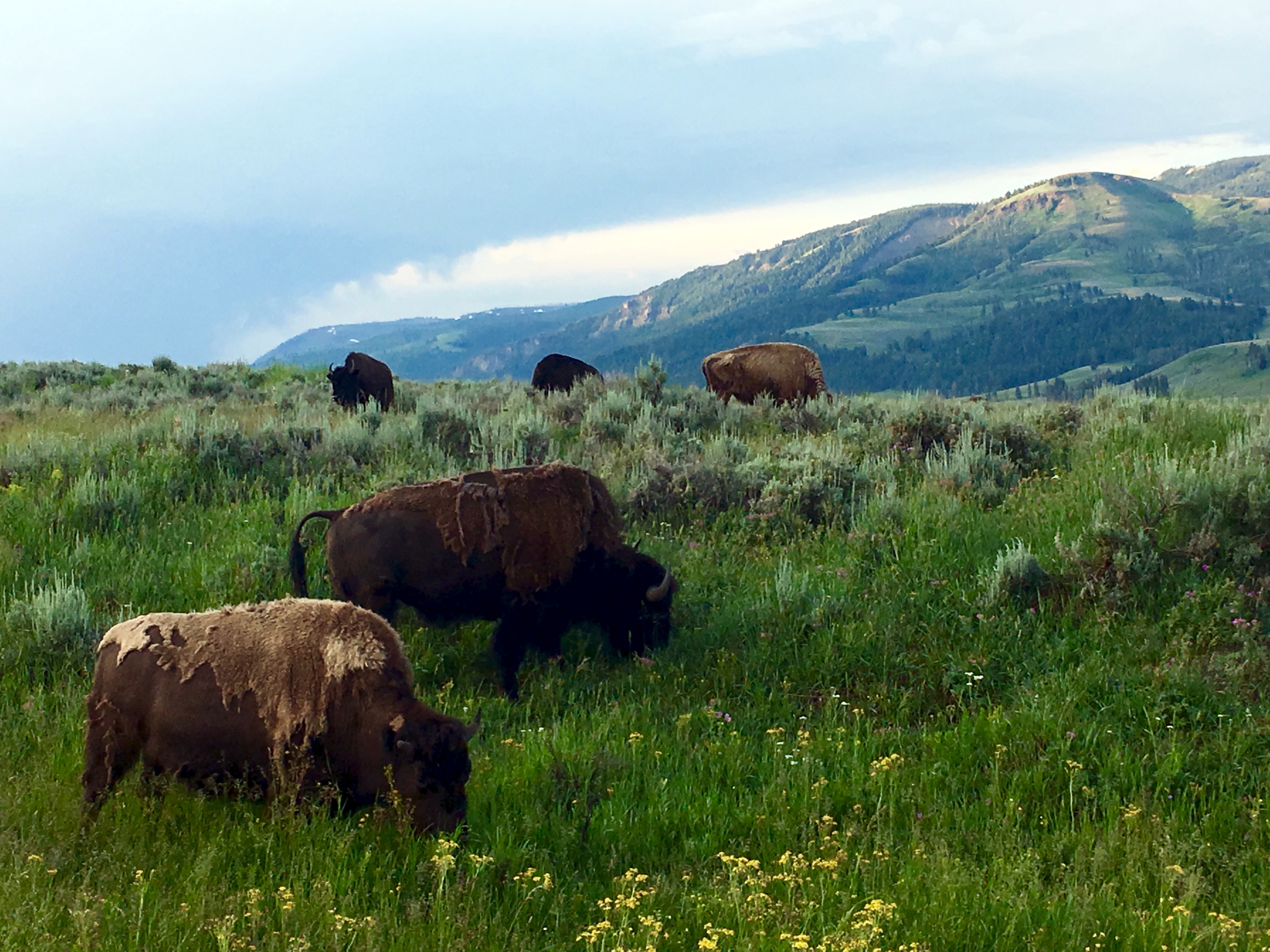
Although wildlife is present throughout park, here in the valleys, it flourishes. On our second day in Yellowstone, we drove through Hayden Valley in the late afternoon and saw scores of bison herds, birds, and a few elk. But there is also a chance to see wolves and bears if you’re lucky. In fact, it’s in these valleys that you are have the highest likelihood of doing so.
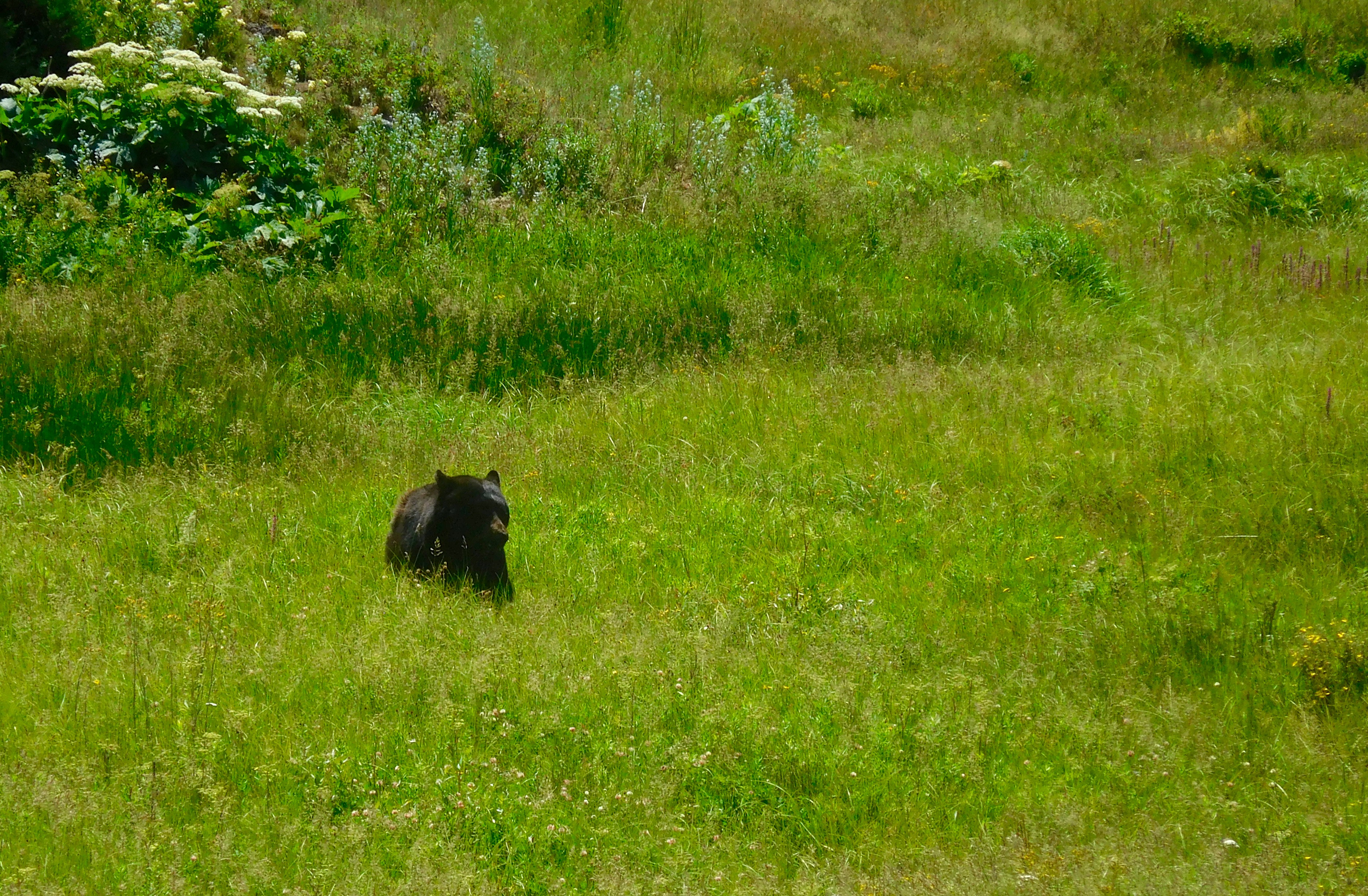
In 1995, researchers released wolves back into the Yellowstone environment in Hayden and Lamar Valleys. Wolves had been eradicated in the late 1800s to early 1900s. Their reintroduction into this environment 60 years later completely changed the ecosystem. Now, grizzlies have competition for their food. Elk populations have come under control. Previously, during the roughly 60 years when wolves were absent, elk ran rampant, and the Yellowstone environment became overgrazed.
We didn’t see any wolves when we visited the park, but we saw several photographers parked patiently on the side of the road at dusk with their scopes pointed at the various wolf dens, waiting for the packs to emerge for their evening hunt.
In fact, a stationary scope is certainly an ideal way to look for wildlife in vast valleys. As I mentioned in a previous post, I was on a rabid search to see a bear during my Yellowstone visit. On our last day in the park, we arose very early to get to Lamar Valley by sunrise. We spent hours driving through it and exploring some paths in the valley. In the end, it was only on the drive out of the valley we happened to see a black bear within about 40 yards, and a grizzly at a VERY far distance, up on a hill, with the help of friendly stranger’s telescope.

Next time I visit Yellowstone, I will be taking binoculars, possibly investing in a telescope, and camping out in the valley for hours to spot these magnificent creatures in the wild.
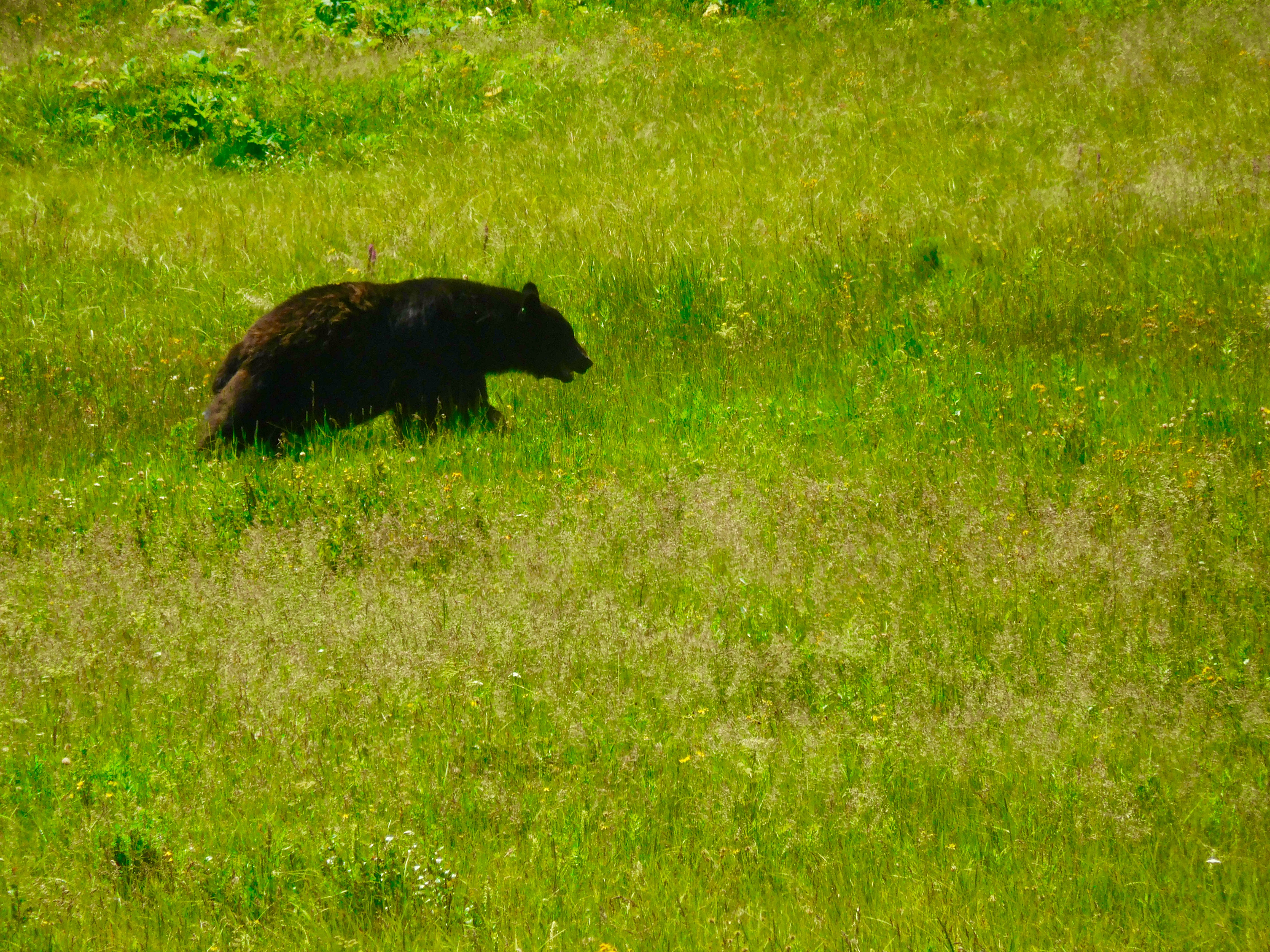
8 Grand Canyon of Yellowstone – various viewpoints
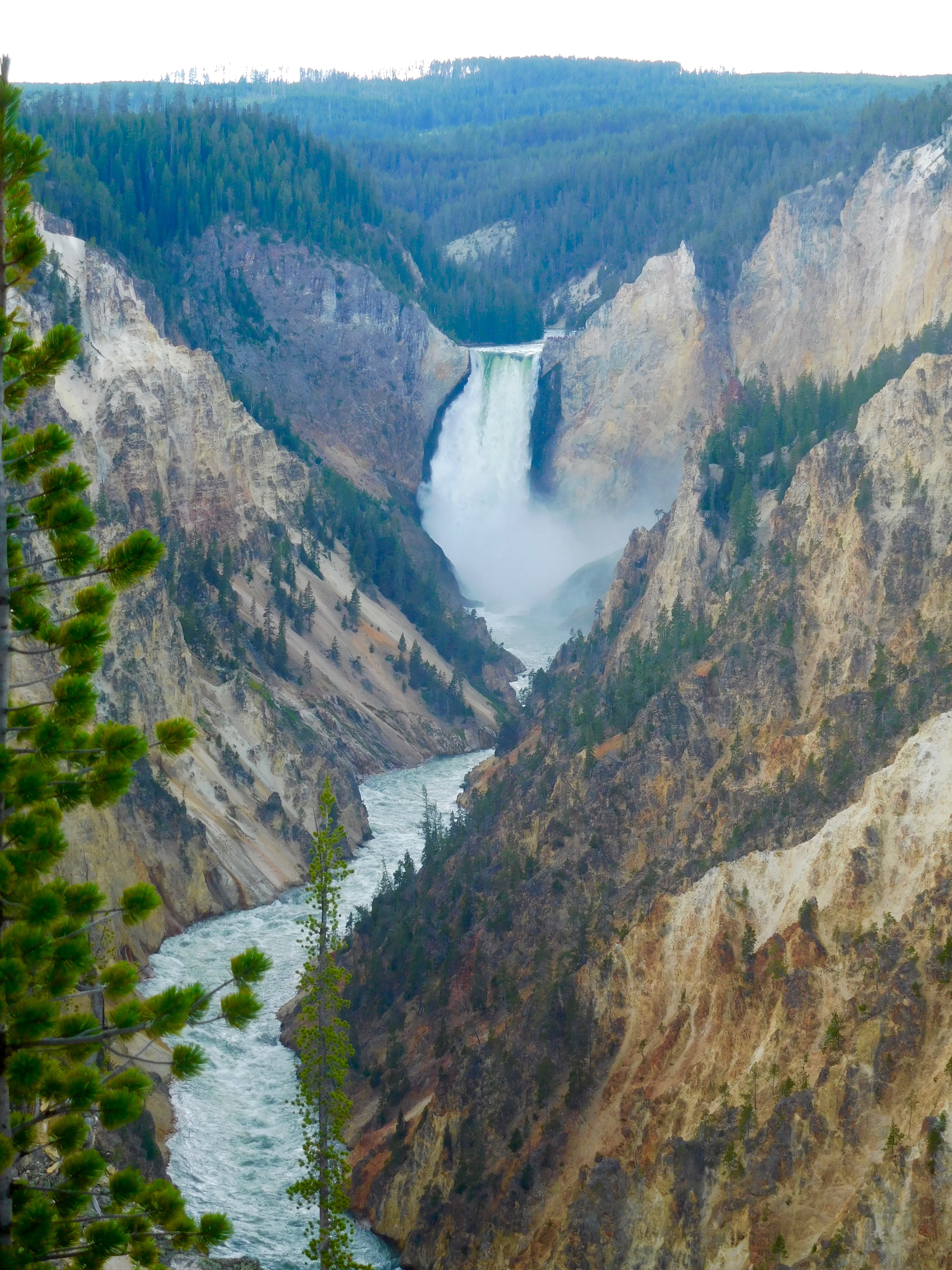
We viewed the Grand Canyon of Yellowstone on our last day in the park as well, and it was an absolutely magnificent sight. The Yellowstone River has carved this canyon over centuries, and by looking at the photos, I did not expect it to be much. However, up close and in person, this canyon is impressive, and the waterfalls are simply spellbinding. I recommend viewing the waterfalls from the various viewpoints available because each offers a different vantage point.
- Brink of the Upper Falls: This is where you can hear, see and feel the true magnitude of this waterfall up close.
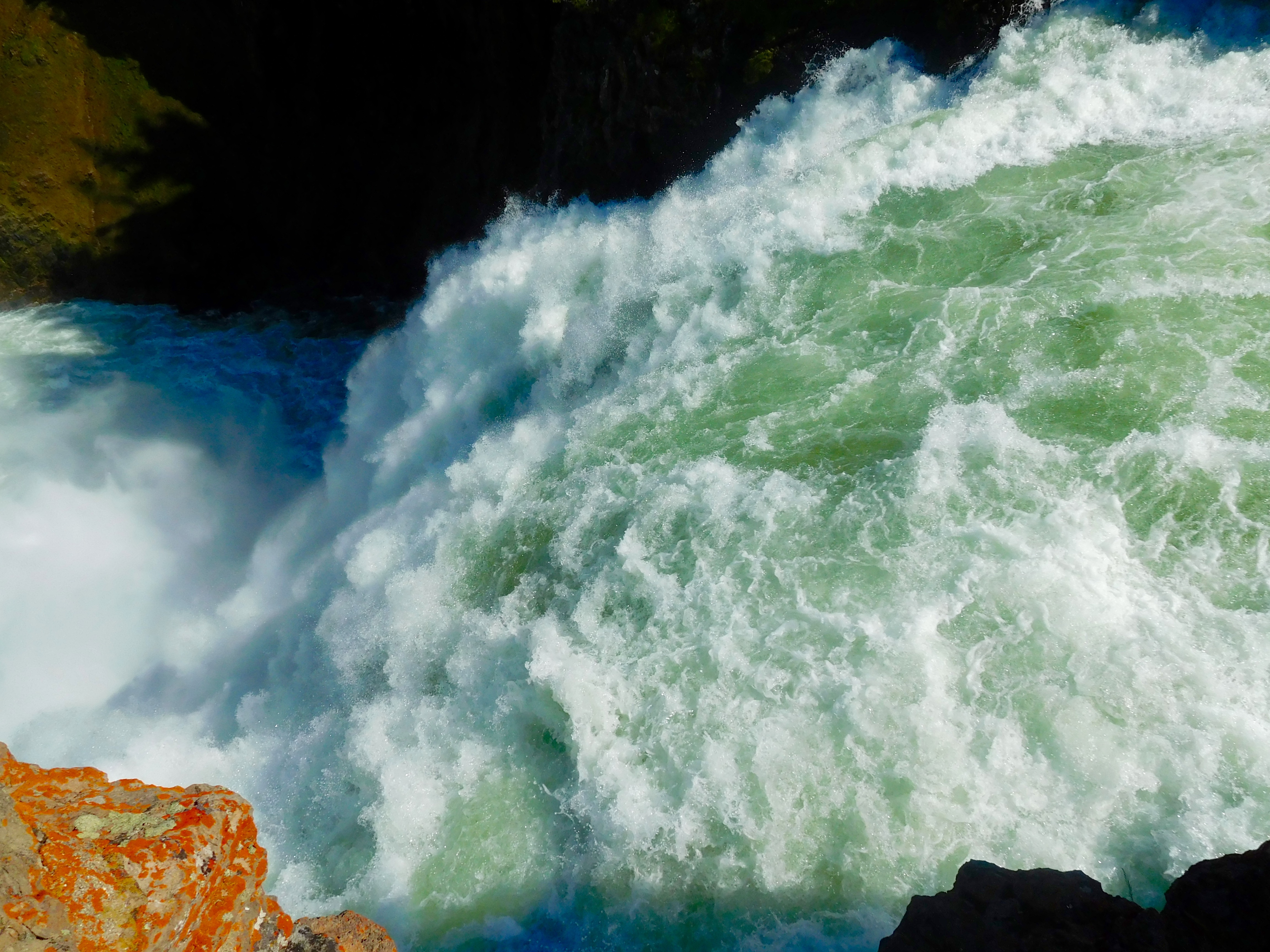
- Lower Falls: Here too, you experience the strength of the falls, but you also get a good view of the upper falls cascading down and picking up momentum.
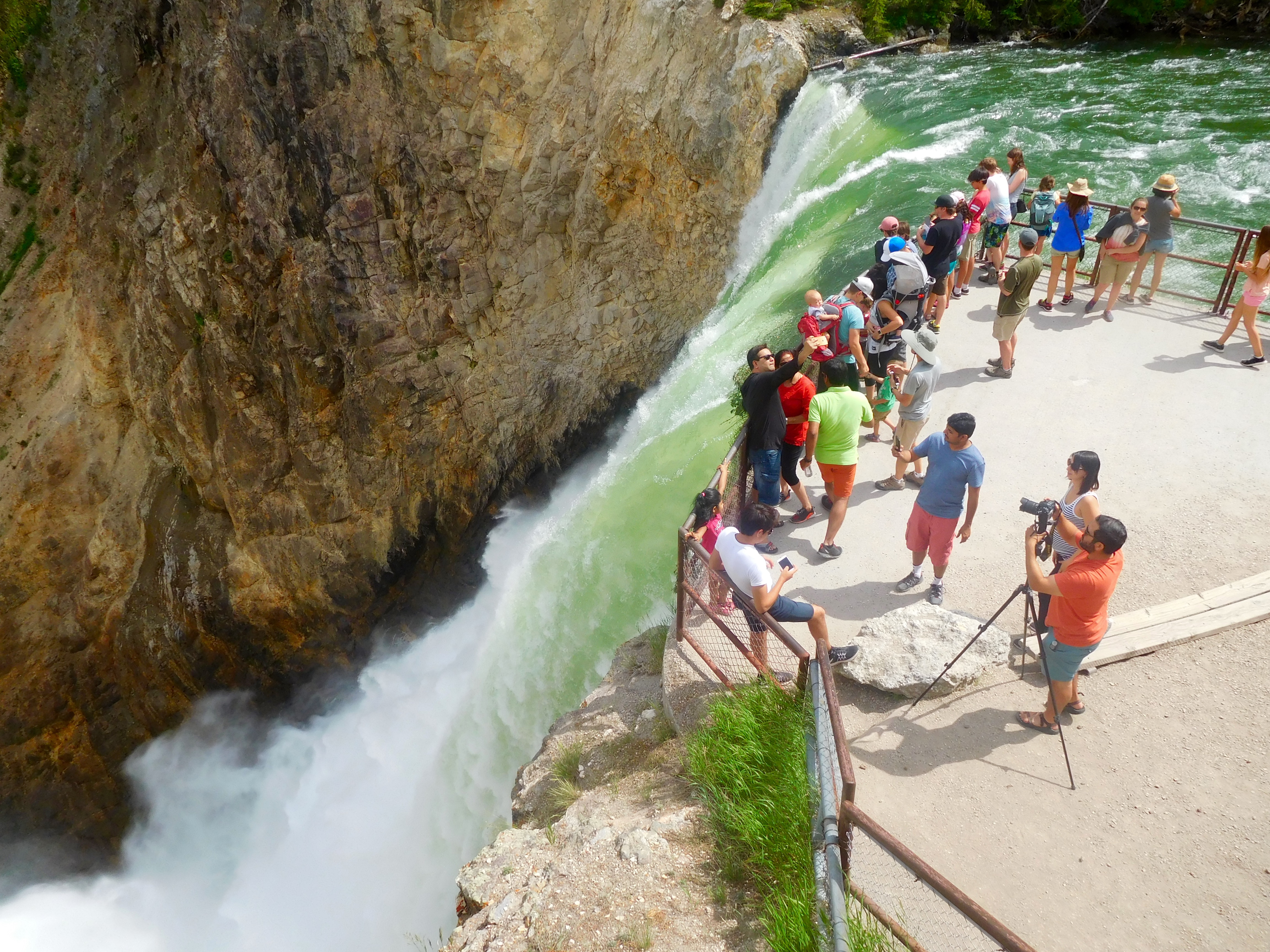
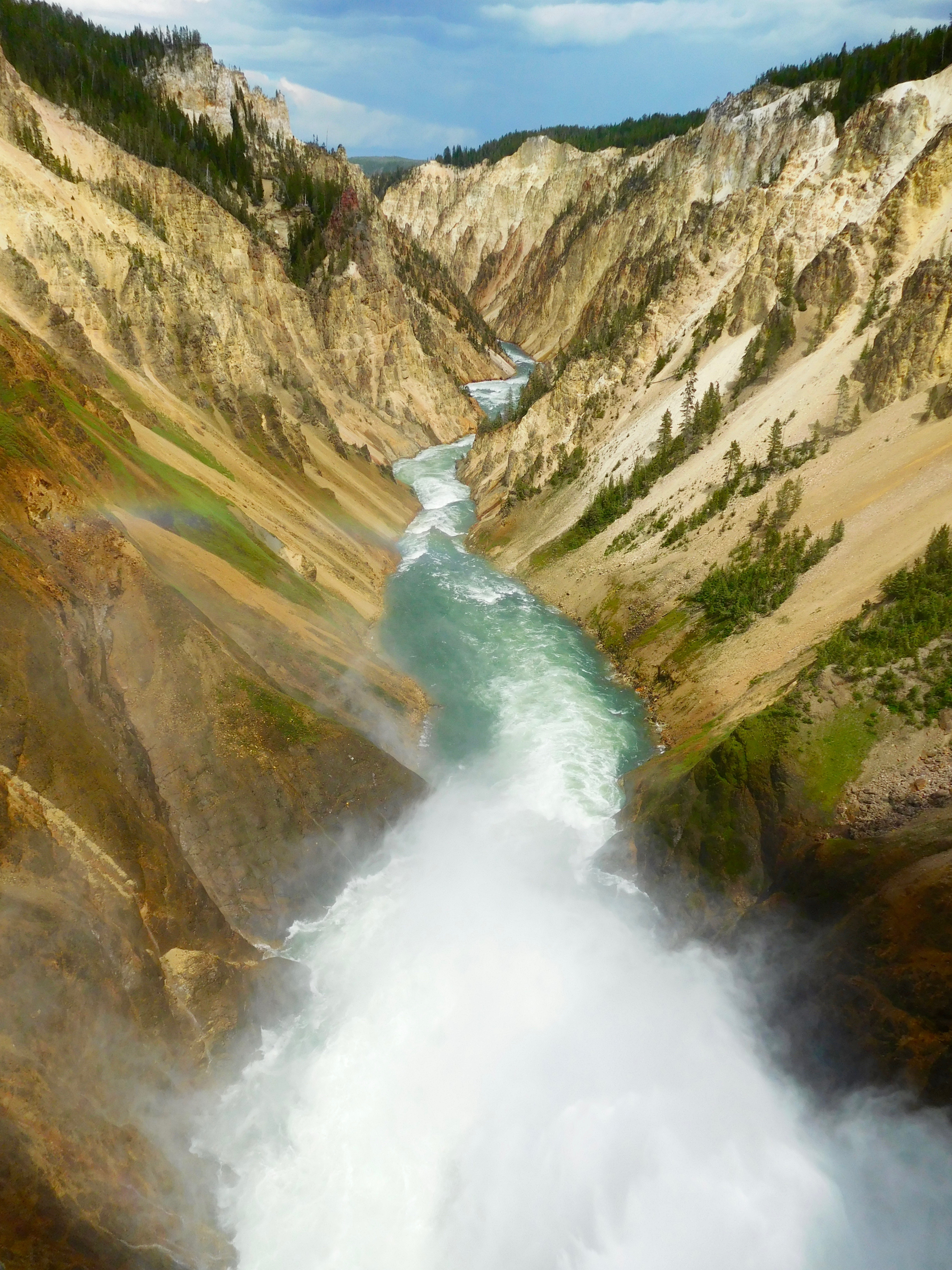
- Artist Point: Across from the waterfalls, this is where you can see the full view of the falls gushing into the rugged canyon, a truly picturesque sight as the surging water and greenery of the nearby woods is juxtaposed with the ruddy walls of the canyon.
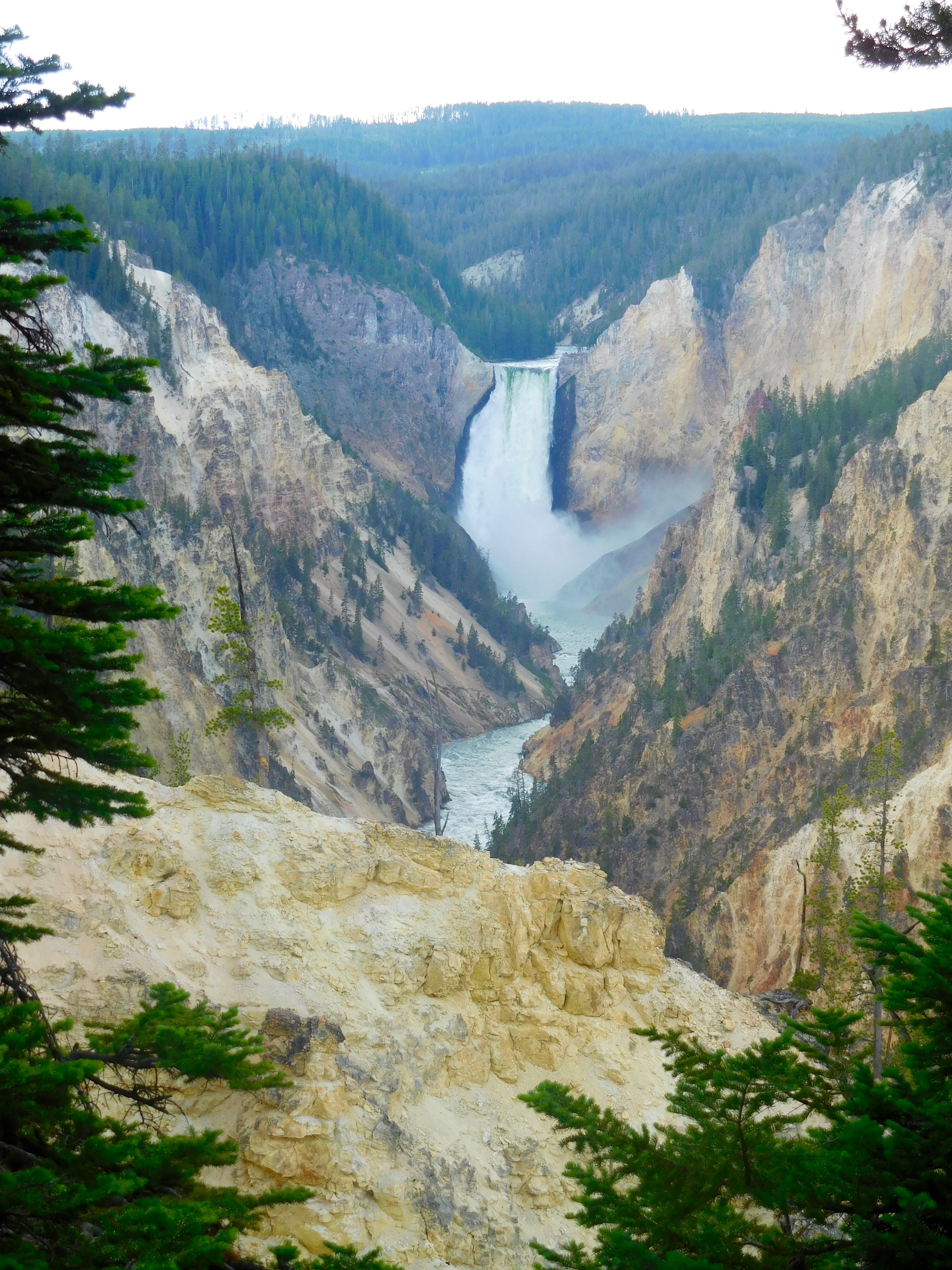
Keep an eye out for wildlife such as osprey here in the canyon.
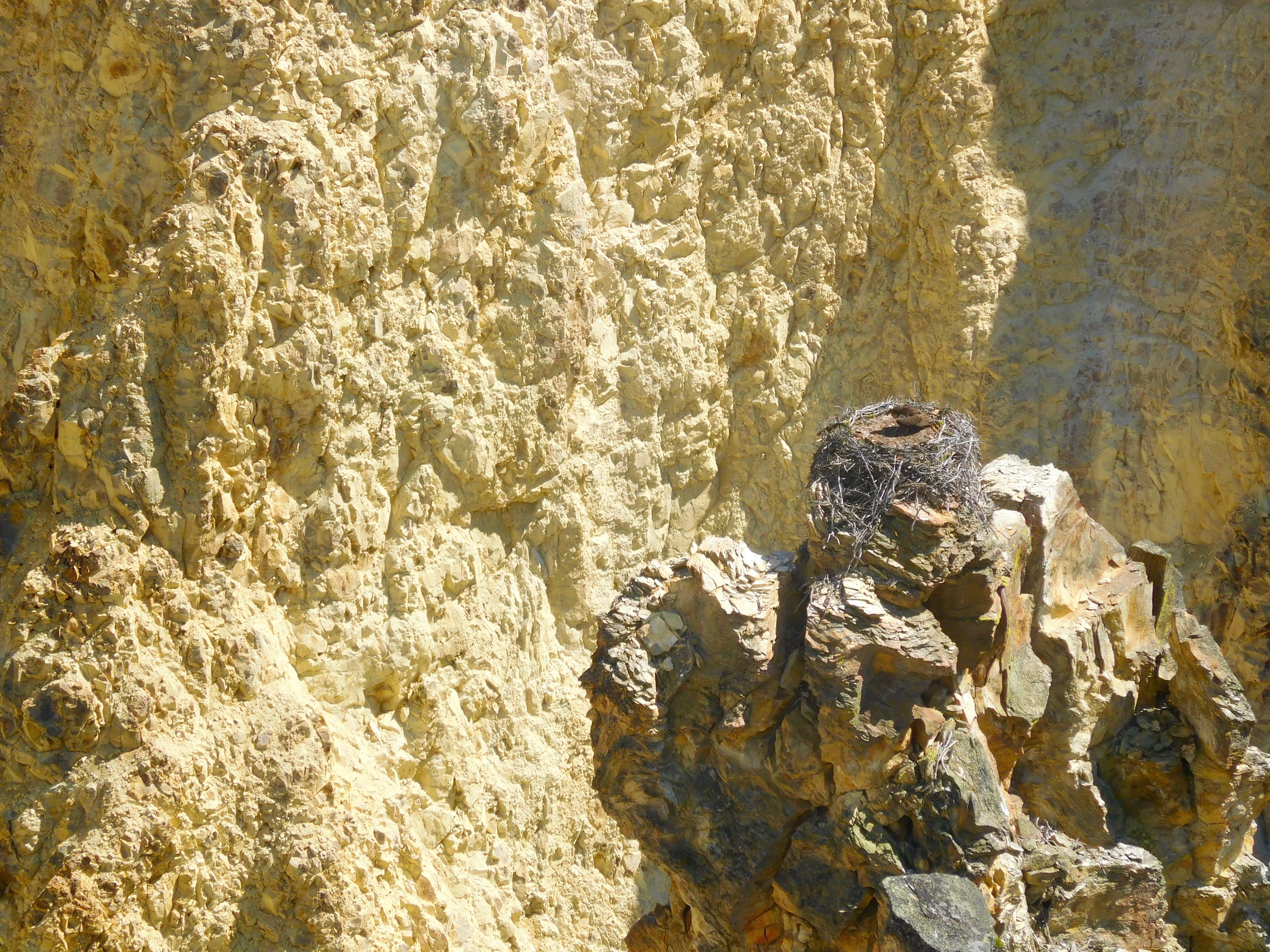
Dining & Lodging
9 Old Faithful Inn

This is one of the most renowned accommodations and dining spots in any of America’s national parks, and it’s no surprise why. This historic inn not only offers an elegant ambiance, but also trendy cocktails, and decadent desserts. It is also considered to be the largest log structure in the world.
My husband and I ate here on our first night in the park, having made reservations for our wedding anniversary. We figured, this was as nice as it was going to get at a national park and I didn’t have high expectations. However, when we entered the inn, I was pretty impressed that there was a such a chic spot in the middle of the wilderness. On top of it all, I was pleasantly surprised by the menu, too, which had a diverse selection of foods to suit every dietary need.
From spaghetti squash specials to a spinach salad that I ordered EVERY night in the park, and from affordable to fancy wine, this place was THE spot to wine and dine.
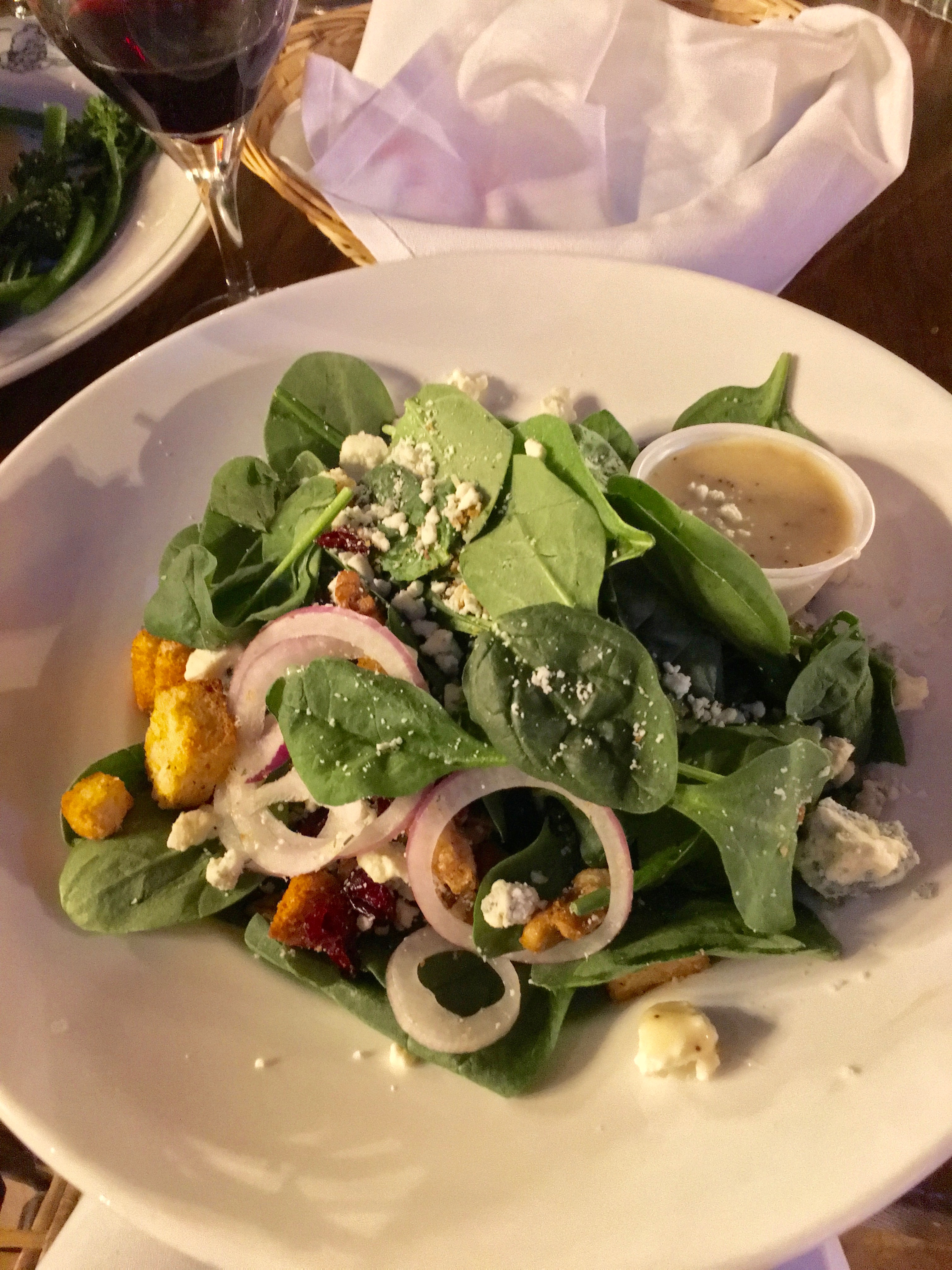
Guests can make a reservation early to guarantee a spot for dinner, or you can walk in and wait to be seated, enjoying the live violin and piano music while sipping a cocktail as you wait.
10 Old Faithful Inn – surrounding lodges

We didn’t stay at the Old Faithful Inn because the remaining rooms were priced outside of our budget. We knew we’d spend most of our days outdoors anyway. Instead, we booked at the Old Faithful Snow Lodge, next to the Old Faithful Inn, and these accommodations were quite nice. There are also smaller cabins available in the Old Faithful area.
11 Canyon Village Cafeteria
On the second and third days in the park since we had driven northeast to explore Hayden and Lamar Valleys, we ate at the cafeteria at Canyon Village. On the first day, we stopped in around 3 p.m. when most of the stations in the cafeteria were closed. We got flatbreads and ice cream because the line out of the burger joint was too long.
On day two, we got noodle bowls and rice bowls at the Asian food station. Food at the cafeteria here is nothing to brag about.
Wish We’d Done It
12 Mammoth Hot Springs
These hot springs are unlike those in the other geyser basins because of their travertine terraces. Since we were eager to drive to the northeastern side of the park to view wildlife in Lamar Valley, we didn’t have much time to go northwest to explore Mammoth Springs. However, I know that this is a very popular site, and like the Old Faithful area, has several lodging and dining options.
TIPS IF YOU GO
- Book early!!! Summer season is peak season, so plan at least six months in advance. When we booked our accommodations for July 2017, it was January or February 2017, and already, options had become limited.
- The Upper Geyser Basin and Midway Geyser Basin have some of the best thermal features for which Yellowstone is known. Some of the other sites like Painted Pots or the mud volcano, etc., are not so impressive, so spend more time the other two basins, and Mammoth.
- Invest in a good camera if you want to capture wildlife photos. The photos you see online are taken with expensive zoom lenses, not by standing next to wildlife, so don’t put yourself at risk of getting mauled, gored, or basically, attacked in any way.
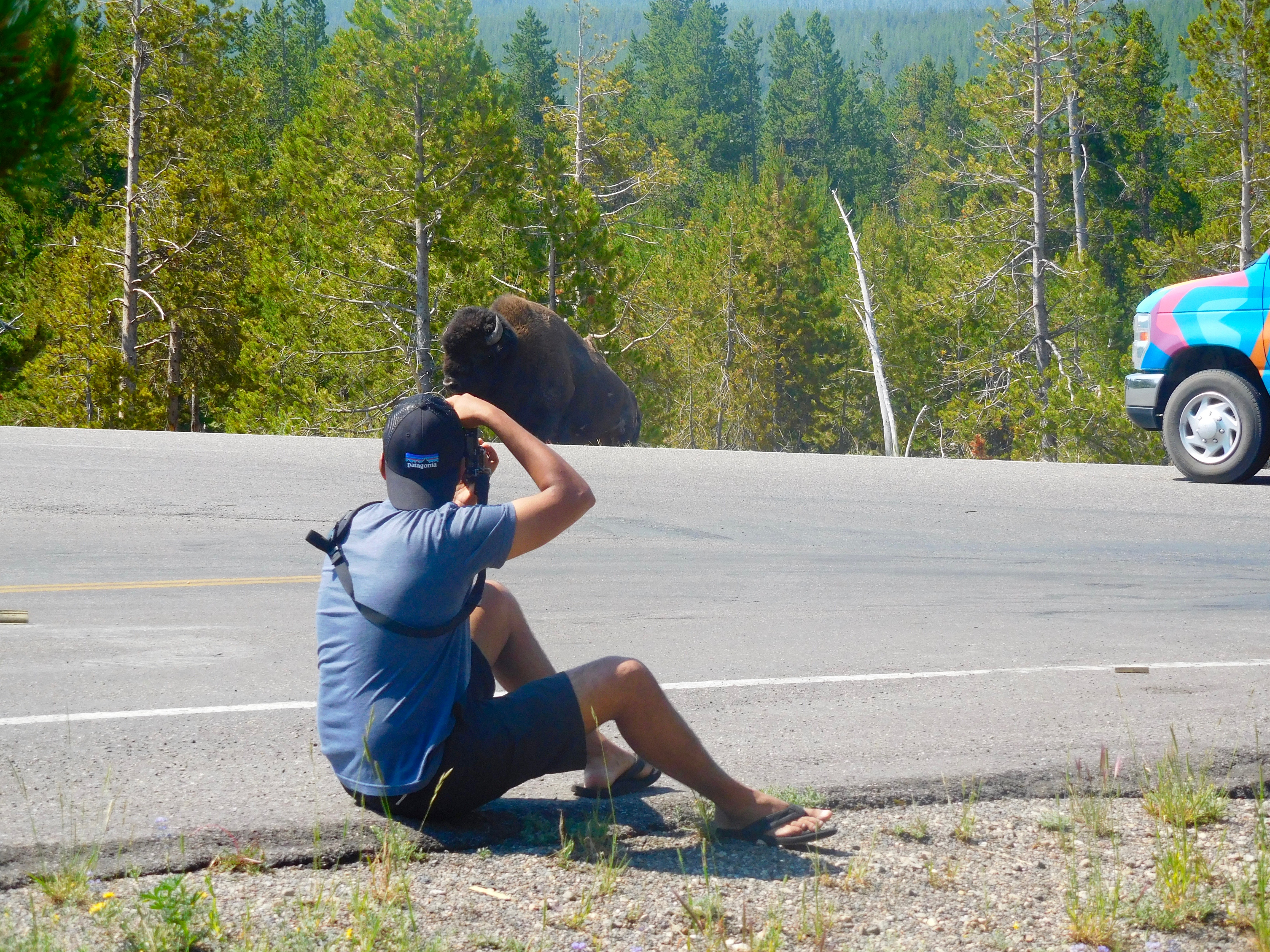

- Unlike Grand Teton, there is almost no cell service in this park, so if you’re coordinating a trip with friends and family, set meeting times in advance if you’re splitting off. Even between the different lodges, some places have landlines while others don’t. Cell signal and Wi-Fi in rooms is spotty, and if you pay, it is expensive. Take advantage of the opportunity to disconnect, but plan accordingly.
- If you’re like me and love wildlife, check out my guide on where to find bears with tips on bear safety in the parks.
- If you’re dying to see bears and wolves in Yellowstone, you can finish your visit, as we did, at the Grizzly Bear and Wolf Discovery Center in the Town of West Yellowstone, where “rescued” bears, wolves, and raptors have been taken from the wild, either because they posed a danger to humans, or because they would not be able to survive in the wild on their own.
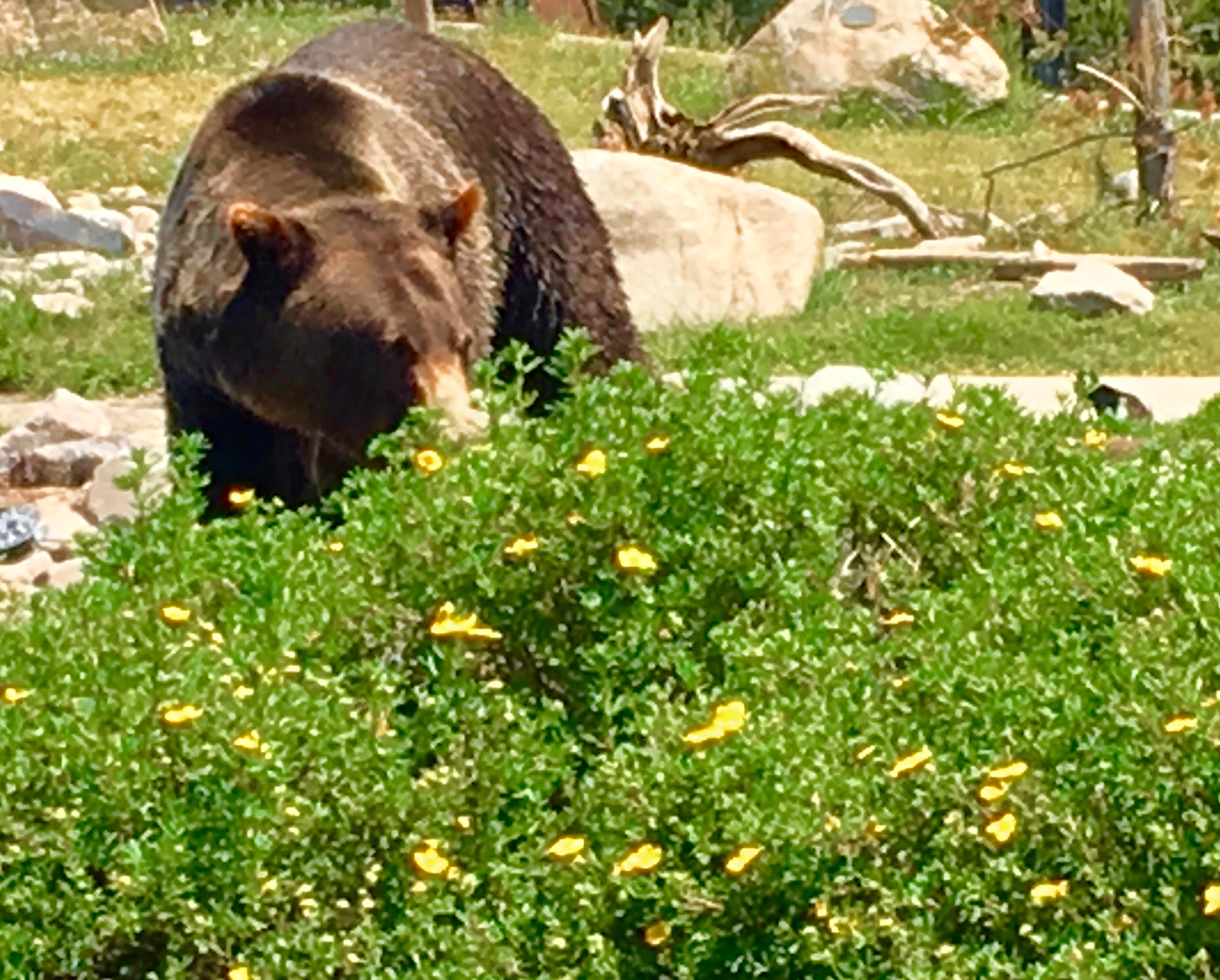
SHARE YOUR YELLOWSTONE STORIES
Have you been to Yellowstone? What adventures did you go on? I want to hear from you! (Especially if you saw some cool wildlife!!) Leave a comment or message me!
7 Comments
Comments are closed.











[…] travels took us to Nashville, Miami, New York, Grand Teton and Yellowstone National Parks, Salt Lake City, and Alaska, but there were also blog posts about Hong […]
Wow! This is so beautiful! Yellowstone is definitely on my bucket list, but seeing your review made me want to go there even more!
Thanks, Andrea! Yes Yellowstone was like a dream. Each scenic view better than the last, and the geographic features and wildlife are simply a marvel. Hope you enjoy it as much as we did!
Thank you so much for posting. We are planning on visiting the park this coming September:).
[…] the thrill and views did not match those we experienced in Grand Teton and Yellowstone during high season in July, there were still benefits of visiting before the arrival of the tourist […]
[…] 12 Things to Do in Yellowstone – Where Heaven & Hell Collide […]
That was good stuff Amritha! Love the name! Blessings!